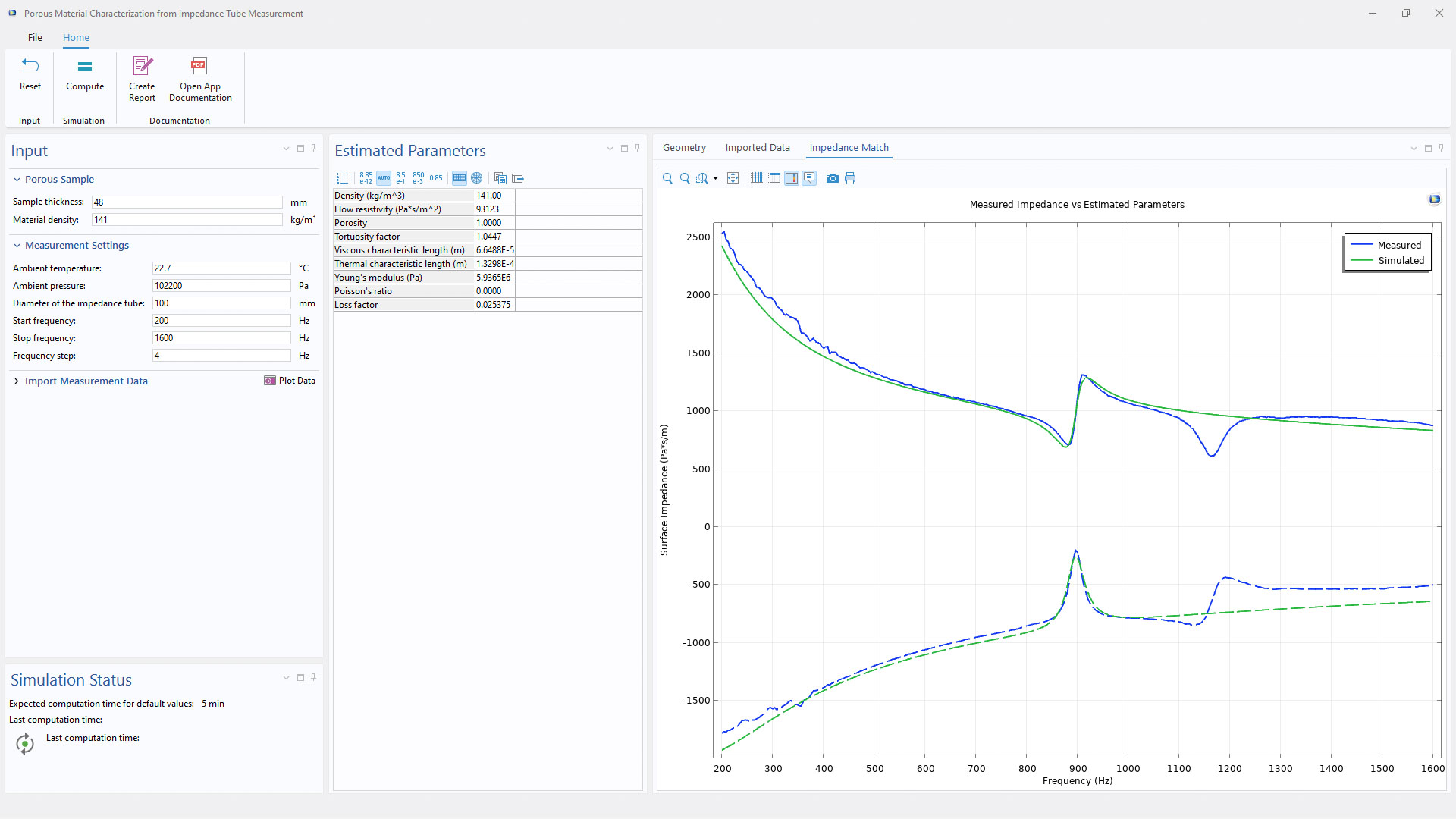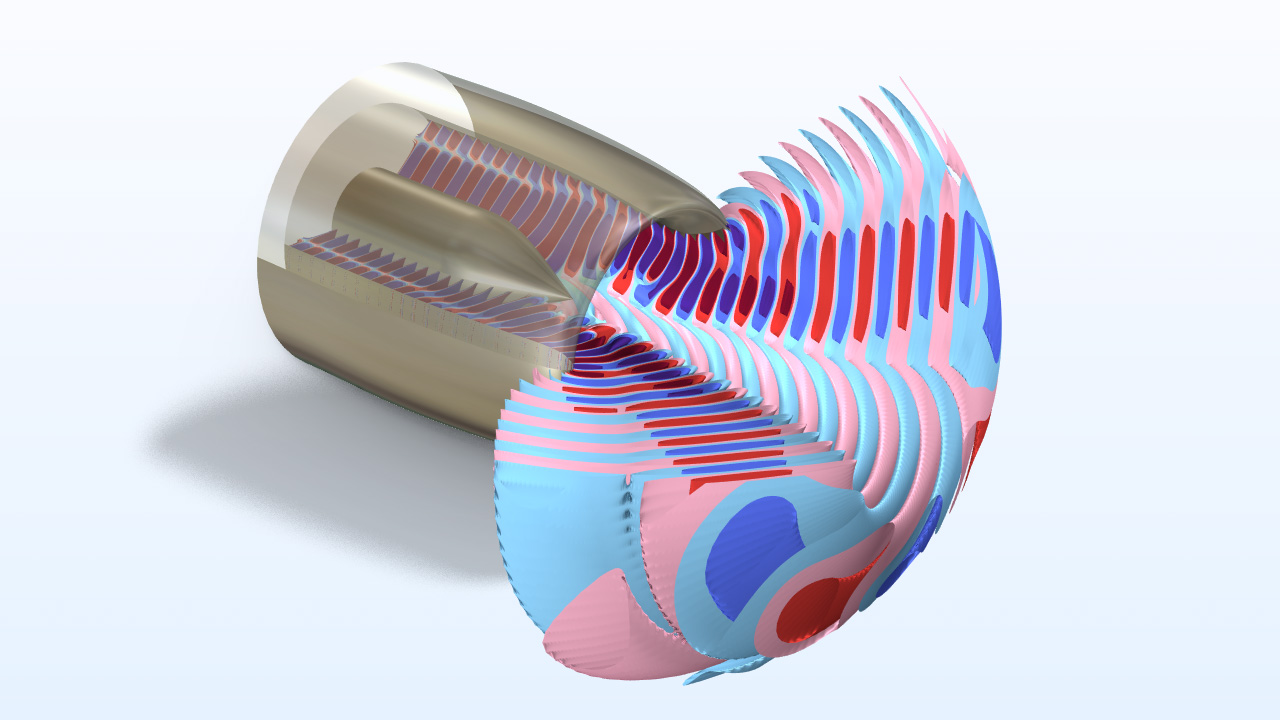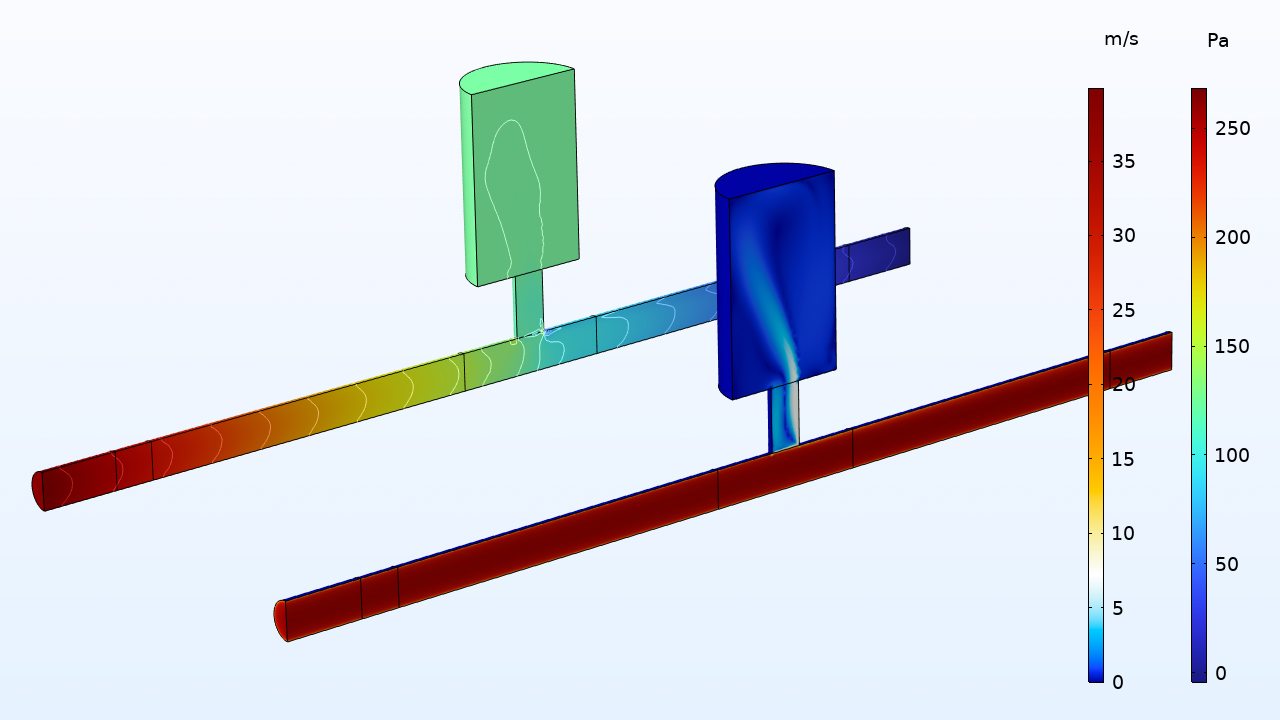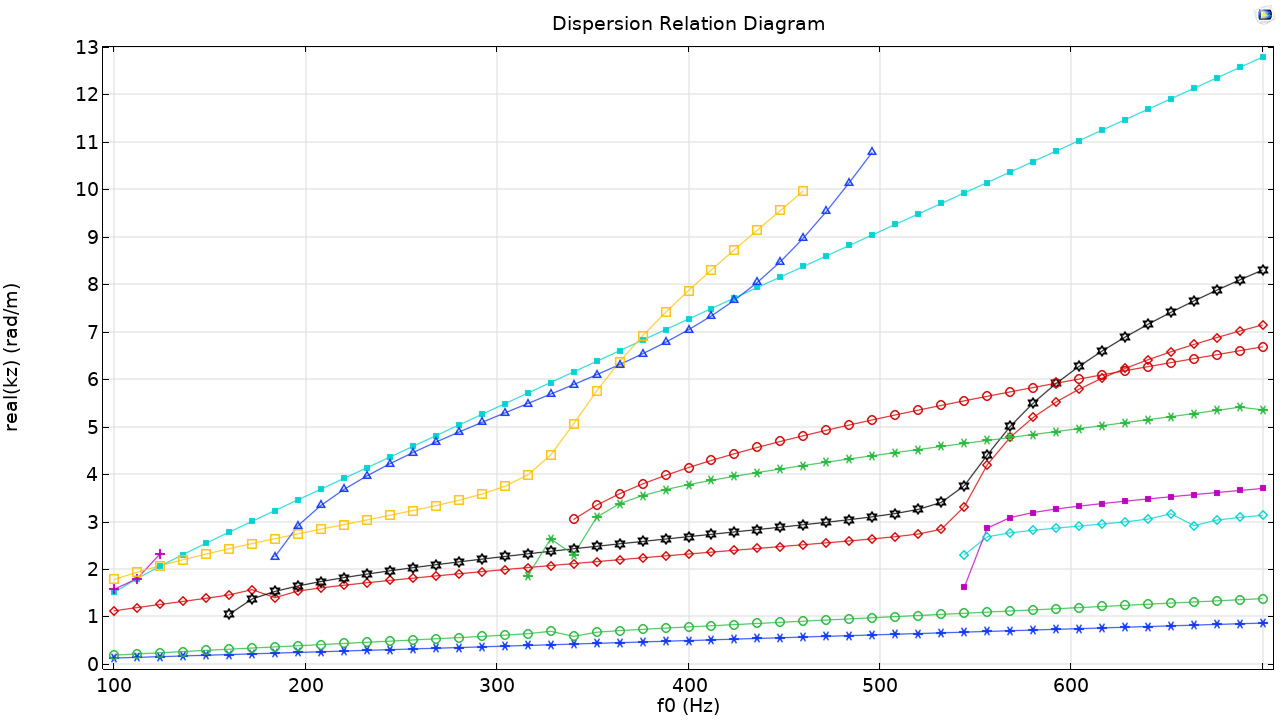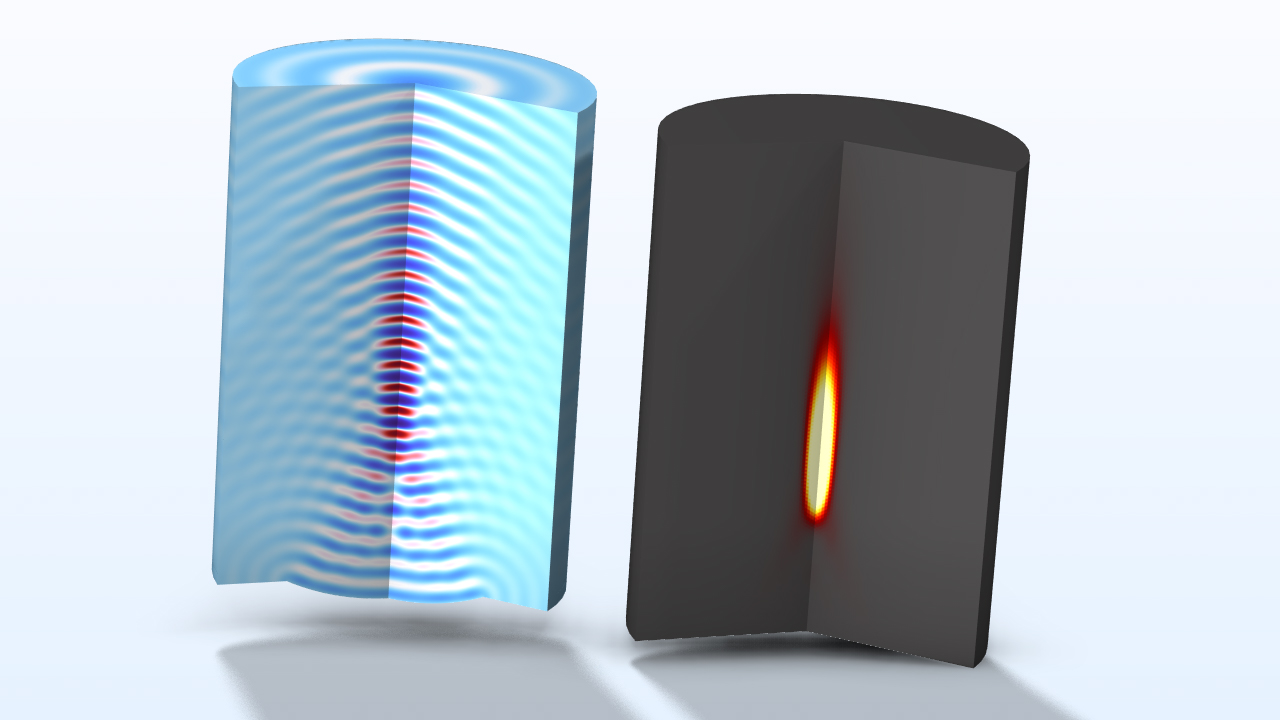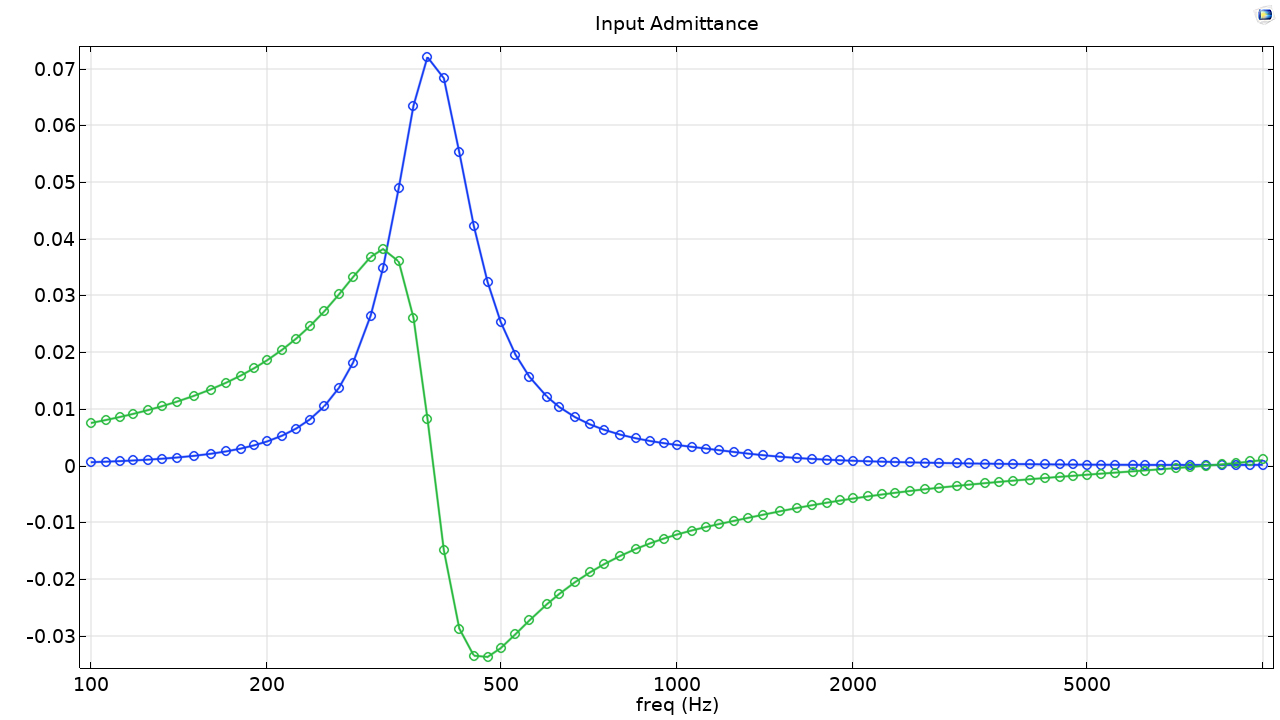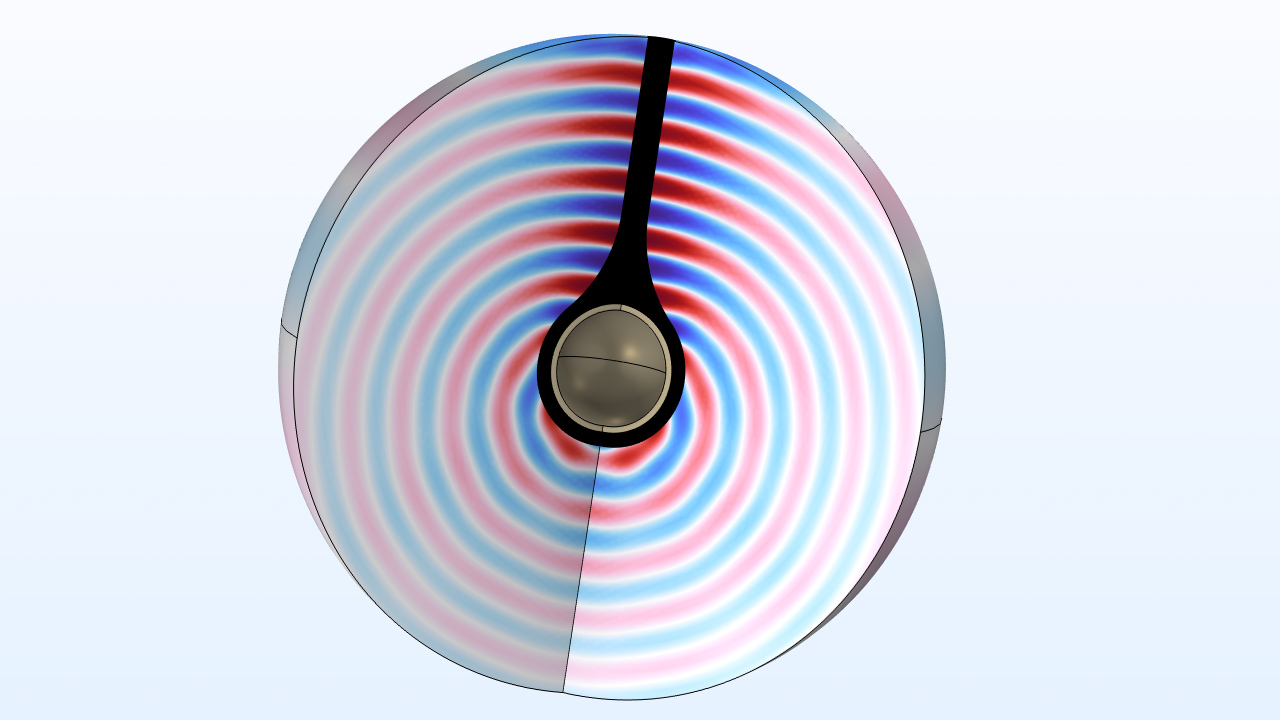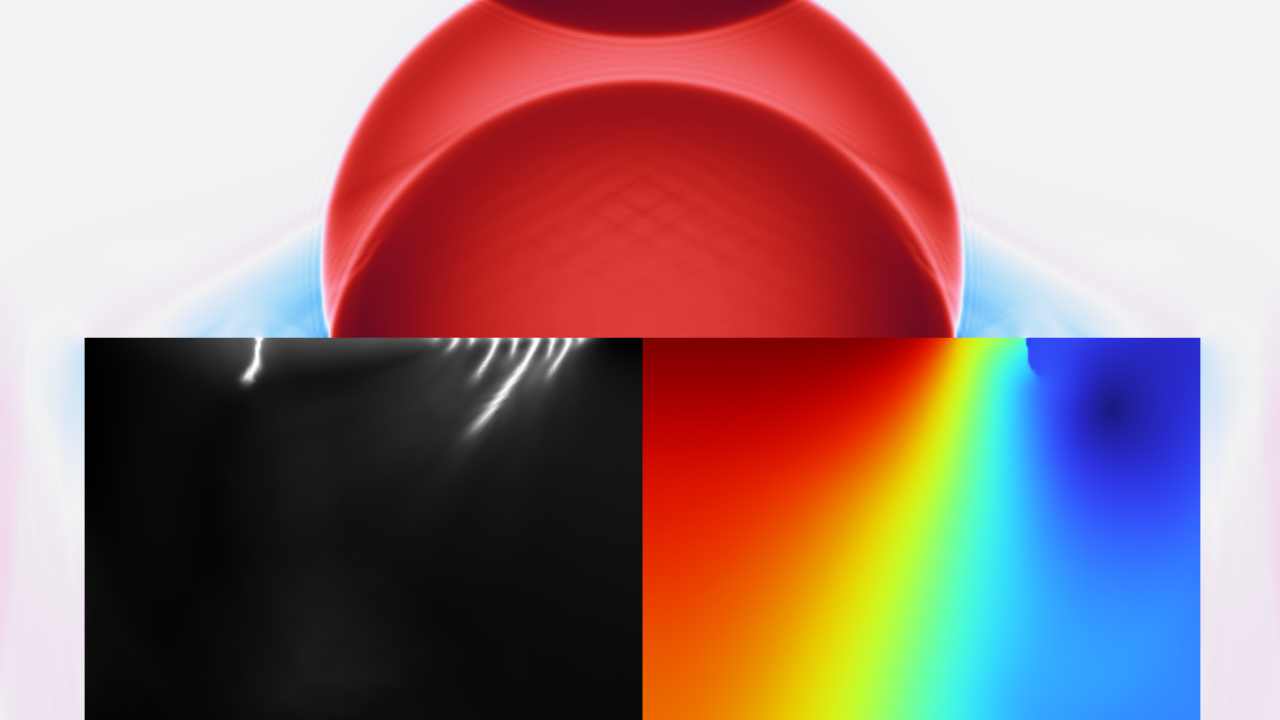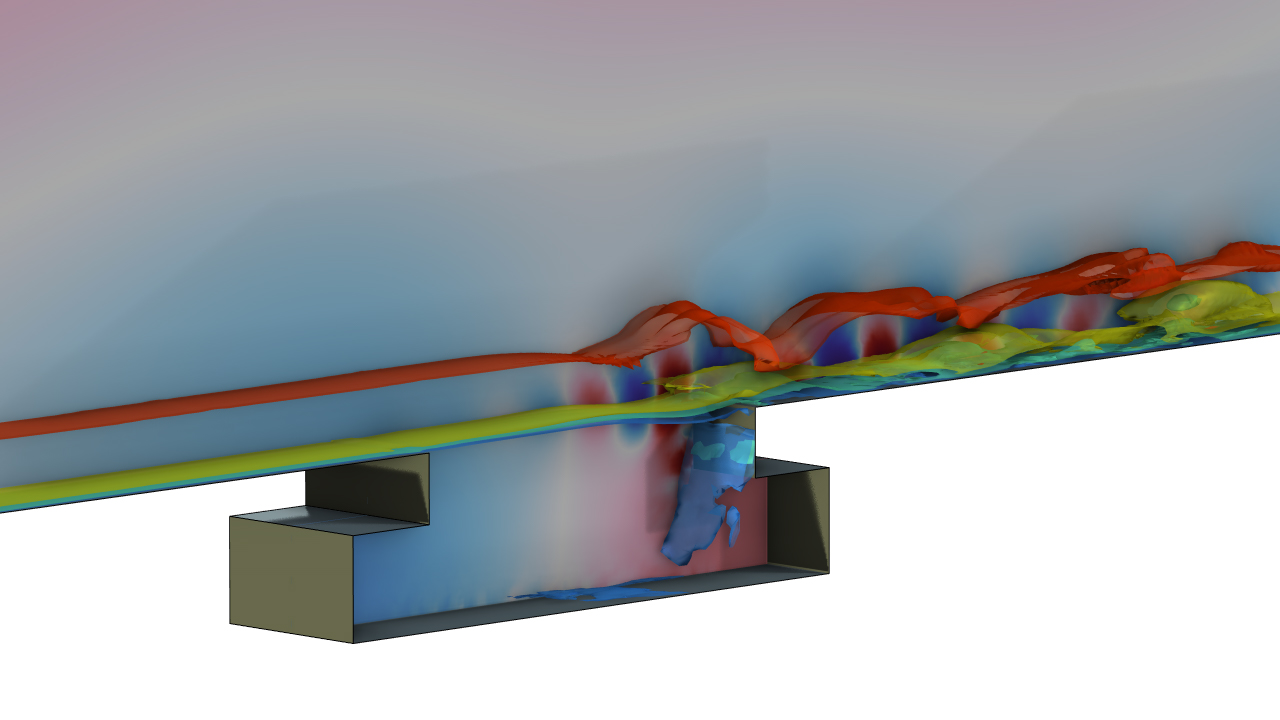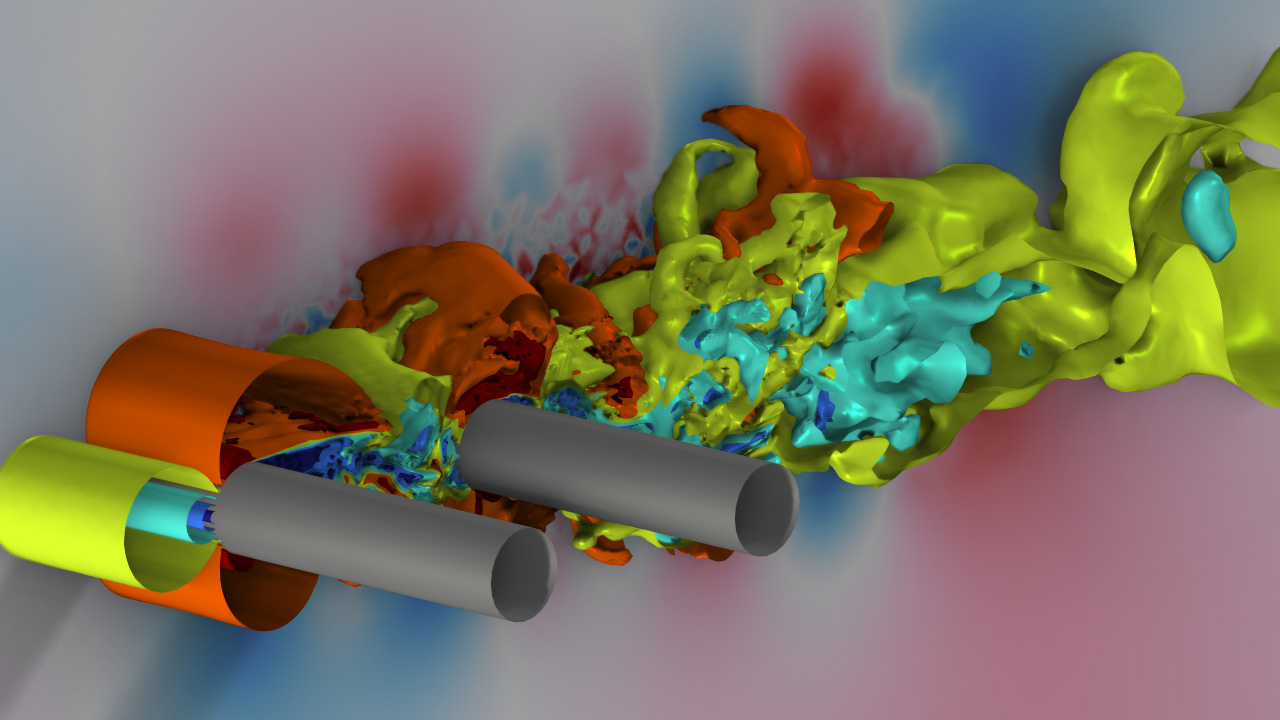Acoustics Module Updates
For users of the Acoustics Module, COMSOL Multiphysics® version 6.4 introduces multi-GPU support for time-explicit pressure acoustics, import functionality for CGNS flow data, built-in JCA and JCAL models for poroacoustics, and a new dedicated Periodic Port feature. Learn more about these updates below.
Multi-GPU Support for Pressure Acoustics, Time Explicit
The CUDA-X accelerated GPU formulation for the Pressure Acoustics, Time Explicit interface now supports the use of multiple GPUs on a single machine as well as GPUs in cluster configurations. The accelerated CPU formulation is also now supported in cluster configurations. With these improvements, room acoustics simulations run multiple times faster, and the scale of the models can be increased in terms of resolved wavelengths. For example, in the new Chamber Music Hall — Wave Based tutorial model, solving the 500-Hz octave band (with a mesh resolving up to 750 Hz) results in a model with 300 million degrees of freedom (DOFs). Using the accelerated CPU formulation, the simulation of 40 periods (30,000 time steps) on 16 cluster nodes takes 7 hours 45 minutes, while solving on a single GPU (NVIDIA® H100) takes 3 hours.
For the Car Cabin Acoustics — Transient Analysis tutorial model, the simulation time for the first study in the model has improved from 57 minutes in version 6.3 to 50 minutes on a single GPU (NVIDIA® RTX 6000 Ada). By running the simulation on 2 GPUs, the time is nearly halved, taking 29 minutes. Such performance can also be seen in the Wave-Based Time-Domain Room Acoustics with Frequency-Dependent Impedance and Acoustics of an Open-Plan Office Space tutorial models.
Note that the Pressure Acoustics, Time Explicit interface is supported for all license types when using a single GPU but requires a floating network license when using multiple GPUs.
Propagation of an initial pulse (centered at 500 Hz) in the new Chamber Music Hall tutorial model.
CGNS Flow Data Import and Aeroacoustics
Aeroacoustic and convected acoustic simulations have been improved with several important new features. CFD data stored in the CGNS file format can now be imported into COMSOL Multiphysics® using the new CFD Data (CGNS) function together with the new Imported Fluid Flow interface. This combination ensures that the data is imported and mapped consistently to the computational mesh. Additionally, the new interface ensures seamless integration with the existing Background Fluid Flow Coupling and Aeroacoustic Flow Source multiphysics couplings and mapping studies.
Additional updates: The Brambley impedance model has been added to the Linearized Potential Flow, Frequency Domain interface; the linearized Euler interfaces have a new linearized perturbed compressible equation (LPCE) formulation option and improved stabilization; and window functions can now be applied when setting up the Aeroacoustic Flow Source feature. The following tutorial models demonstrate these new updates:
- helmholtz_resonator_with_flow_cgns (new)
- generic_nacelle_liner (new)
- tandem_cylinder_flow_noise_DES_6.4_cleared (new)
- cavity_flow_noise
- point_source_2d_jet
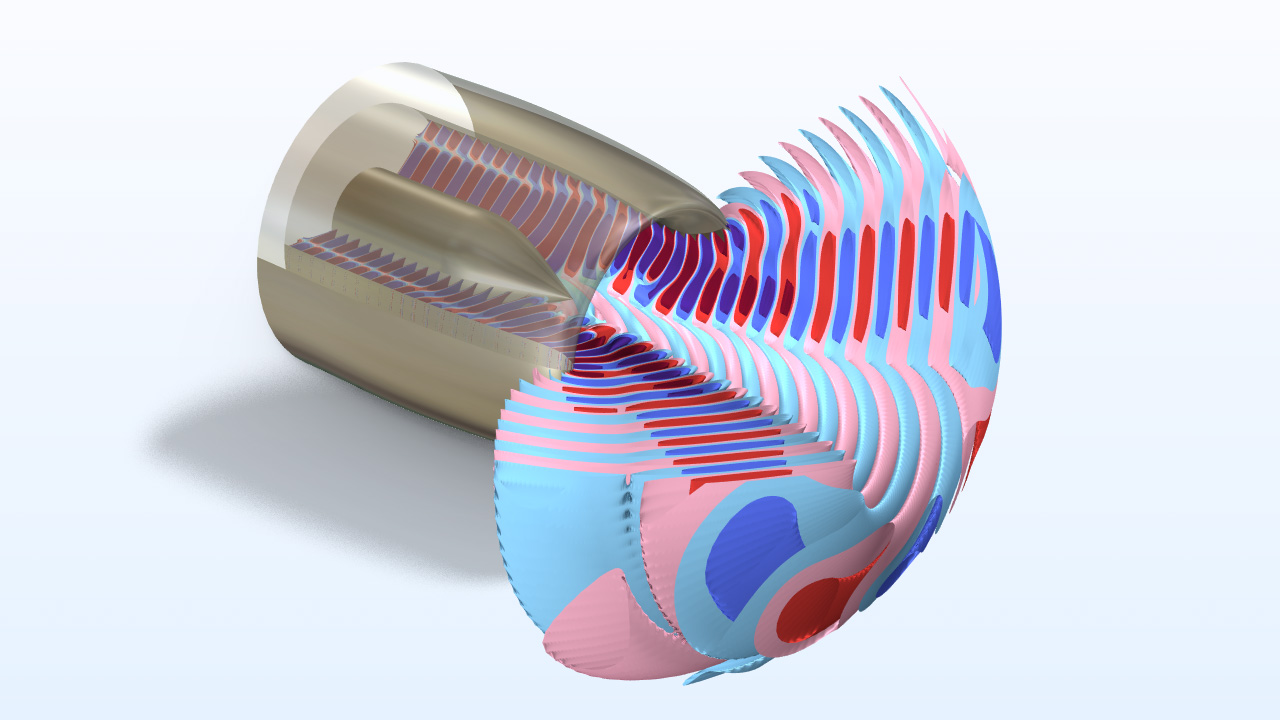
Built-in JCA and JCAL Models in Time-Domain Poroacoustics
A Poroacoustics feature is now available in the Pressure Acoustics, Transient and Pressure Acoustics, Time Explicit interfaces. The feature also includes two new options when setting up a porous material: the Johnson–Champoux–Allard (JCA) and Johnson–Champoux–Allard–Lafarge (JCAL) models, which extend the previous User defined option. When either of these new models is selected, an underlying partial fraction approximation is computed based on the usual poroacoustic material parameters (porosity, flow resistivity, tortuosity, etc.) for the two models.

Periodic Port
Periodic Port is a new dedicated feature for modeling transmission, reflection, and scattering problems for periodic structures such as absorbers and diffusers. It is particularly useful for modeling diffusers, as it can split the reflected energy into specular and nonspecular directions. The feature handles plane wave incidence on the structures as well as all reflected and transmitted diffraction orders. The diffraction orders are captured using the Diffraction Order Port subfeature to the Periodic Port condition. The tutorial models Porous Absorber and Schroeder Diffuser in 2D have been updated to include the new Periodic Port feature.
A periodic Schroeder diffuser (three sections visualized) modeled with the Periodic Port condition.
New and Updated Tutorial Models and App
COMSOL Multiphysics® version 6.4 brings a new app, along with several new and updated tutorial models, to the Acoustics Module.
Porous Material Characterization from Impedance Tube Measurement
Generic Nacelle with Liner
Point Source in a 2D Jet: Radiation and Refraction of Sound Waves Through a 2D Shear Layer
The acoustic pressure fluctuations generated by a point-like source in a narrow jet, solved in both the frequency and time domain. The model results are compared to a NASA benchmark for linearized Euler equations.
Helmholtz Resonator with Flow: Imported Fluid Flow from CGNS Data
Eigenmodes in a Muffler with Elastic Walls
Porous Absorber
Pressure distribution of a porous absorber at 1000 Hz for an angle of incidence of 45 deg. The model is set up with the new Periodic Port boundary condition.
Loudspeaker Driver — Transient Analysis
The pressure distribution, magnetic field, and moving mesh in the region around the voice coil in a loudspeaker driver model.
Uncertainty Quantification of Poroacoustic Parameters in a Transverse Isotropic Porous Material*

*Requires the Uncertainty Quantification Module
SAW-Induced Streaming in a Droplet — 3D Setup
Acoustic Droplet Ejector
High-Intensity-Focused-Ultrasound (HIFU)-Induced Tissue Heating
Ultrasound Imaging with Phased Array
Balanced Armature Transducer — Time-Domain Analysis
Multiphysics model of a balanced armature transducer modeled in the time domain, with nonlinear magnetic materials and moving mesh.
Input Impedance of a Tube and Coupler Measurement Setup: Time-Domain MOR Using Partial Fraction Fit
Spherical Hydrophone
Shock Wave Lithotripsy
Cavity Flow Noise
NVIDIA is a trademark and/or registered trademark of NVIDIA Corporation in the U.S. and/or other countries.

